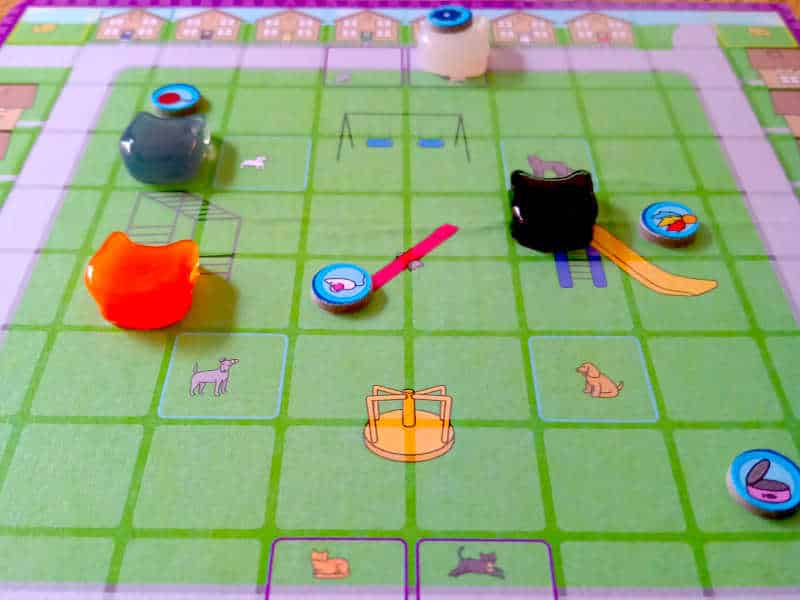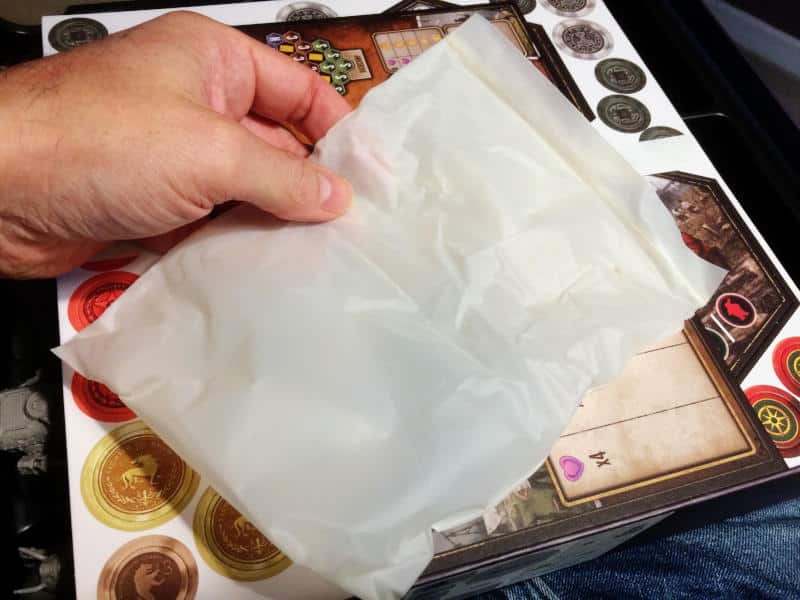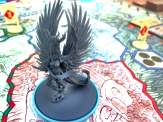Having been a part of our hobby now for a number of years, I have had the pleasure and honour to see a number of games go from early prototypes through to final products. I have also had the honour of being a judge and mentor in the Board Game Workshop Design Contest back in 2019 and 2020. So in this article, I thought I would share my experiences with the stages board games go through until they eventually reach hobbyists like you and me.
Listen to the Audio Version
Intro Music: Bomber (Sting) by Riot (https://www.
Music by: https://www.
License code: VYLUHXG5FRLIEURQ
Early Prototypes
My first experience with playtesting games was at UK Games Expo 2018. A couple of the games I played were still in a very raw format. One game was literally a deck of prompt cards that were handwritten and some wooden cubes.
These very early prototypes are very personal and are there to explore some basic mechanisms and ideas. When you play a game at such an early stage, you have to have a lot of imagination and look beyond the visual presentation. You have to focus on how the core game feels like to play. You have to ignore that there is no fancy art or custom wooden meeples.
That’s quite intentional. Creating these bare-bone proto-versions of board games is quick and cheap. Iterating through many versions, keeping what works and throwing away what doesn’t is really simple. The reason why the game I played was made from a deck of handwritten prompt cards is that it’s easy and quick to make changes and it is much less painful to abandon anything that doesn’t fit.
During playtest sessions of early prototypes, the designer is most likely there to manage your expectations and explain what they are hoping to learn. Having this direct interaction with the person behind the game is very special. The designer will infect you with their excitement. You have to talk to them directly about your gameplay experience. It’s very personal and quite intimate.
Of course, many of these very early prototypes don’t go any further and that’s quite normal. Designers often have many different ideas they work on at the same time. So when one of them doesn’t seem to work, it’s either put on hold or sometimes chucked away.

Get yourself a wooden Tabletop Games Blog dice tray.
Each tray is the perfect size to roll your dice, and with the soft mat, it’s really quiet, while the wooden frame makes it wonderfully sturdy.

Later Prototypes
When a game shows promise, a designer is likely to start thinking more concretely about how it will play and maybe even what it will look like. While during this phase playtesting continues at pace to ensure the various mechanisms come together and create a whole, the designer will also formulate a vision about what they want the game to be. The vision could be purely about the player’s experience, it could focus on table presence or there might be a specific setting that the designer wants to realize. In reality, the vision is a mix of many different things.
So there is a lot happening during this phase. The game goes from something very raw and basic to something a bit more of what we think of games we would see on store shelves. The designer will probably find some stock art to stick on a deck of playing cards, find some cool components and write a rulebook. The aim is to make the game more palatable for potential playtesters. After all, playing with a deck of cards that has some fitting art on it and reading a rulebook, even if it’s just text, is much more enjoyable than playing with a deck of handwritten prompt cards.
Playtesting will continue during this phase to iron out as many wrinkles as possible. The gameplay might also go through further iterations, even though these are likely to be minor increments and not dramatic changes. Then, at some point, the game is very solid and it’s time to put on its clothes.
Game Development
Some designers pitch their games to publishers at this stage, if not earlier. There is no hard and fast rule and some publishers prefer to be just given a raw idea that they can take further and fit into their product catalogue, while others want games that are much further developed, so that they only need to put a theme around it and think about production.
Either way, when a game reaches the development stage, a professional board game developer is usually on the case. Their work can be light-touch and more a matter of guiding the designer or it can be more hands-on. Board game developers often have a better understanding of how a game could function as a product. After all, a game made from a deck of prompt cards won’t sell. Just as likely, games that cost a lot of money to produce aren’t viable as a commercial product.
It is the developers who can advise on how best to realise the vision the designer has, while ensuring the product is priced appropriately and can actually be manufactured, assembled, shipped and is able to be played.
Sometimes board game developers have a more active role. They might reskin a game to fit into a publisher’s portfolio. They might even redesign some of the game’s elements. It is very possible that the designer has handed over their game completely to the developer.
So it really depends on how much a game changes during this phase. I have seen games going through development and while they still looked and felt the same afterwards, their gameplay was very different, even though the essence was still there. It is interesting to see how a great developer can achieve changes that maintain the original vision of the designer.

The Final Product
Eventually, the game is basically done. Most of the art is in place, the rulebook just needs a few more tweaks and decisions have been made about box size, component types and quantities and many other factors that make up the final product. Yet, even this final phase in the life of a board game contains many changes.
It often surprises me how many games still get further tested and tweaked after a manufacturer has been booked and a production schedule agreed. I think we have all seen the crowdfunding updates about production proofs not quite meeting expectations. However, adjusting print colours or similar are minor things. What surprises me more is that sometimes games are still not fully finalized when the factory is ready to go into full production. Sometimes rules are still being tweaked and the printing of the rulebooks is scheduled to happen later. Even components can sometimes change.
However, at some point, the button is pressed and the machines are running. Now it is too late to change anything, unless you are prepared to pay through the nose. Finally, the game is becoming an actual product that people, like you and me, will hold in their hands and play with their friends or family. Finally, the game is born and will take on a life of its own.
As far as this article is concerned though, the story is now over. A game has gone from an idea to a very rough, early prototype, to something more concrete and finally to a product we can cherish. This journey can take many, many years and some games never see the light of day – and those that do will bring joy to many of us. That’s really amazing.
If you enjoyed this article, please have a look at my support page to see how you can help keep the blog going.
Useful Links
- Board Game Workshop Design Contest: https://theboardgameworkshop.
com/ design-contest/
2 Comments
What are you thoughts?
Add your thoughts on the topic to the form below and join the conversation.
Audio Version
Intro Music: Bomber (Sting) by Riot (https://www.
Music by: https://www.
License code: VYLUHXG5FRLIEURQ
Playlist
These are the songs I listened to while I was writing this topic discussion article:






There is substantially more to making a game than I expected. Especially the artwork that is needed to add content, color and substance to any given title or release. Thank you for laying it all out so neatly and in plain English. Much appreciated.
Hello Bret. Thank you for your comment. I’m glad my article was helpful. It is indeed surprising how much goes into making a game. Of course, some games go from idea to reality much more quickly, but many games take a long time to get there.